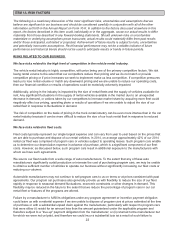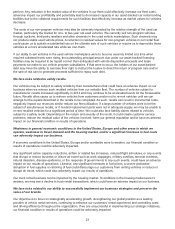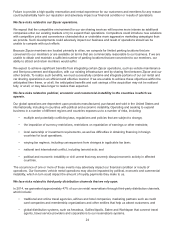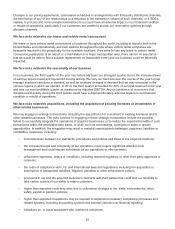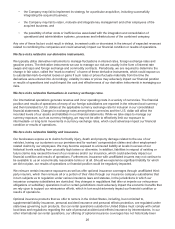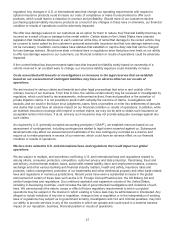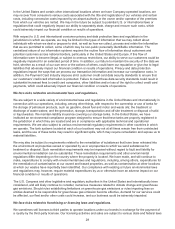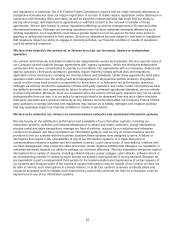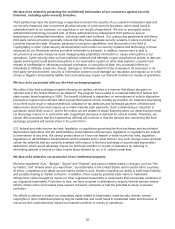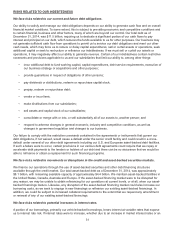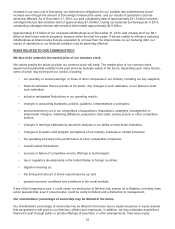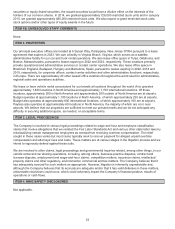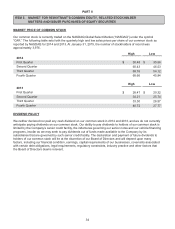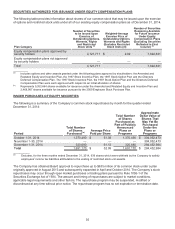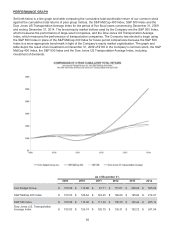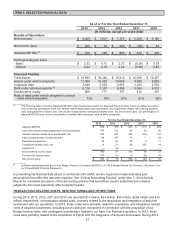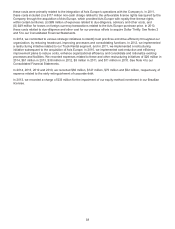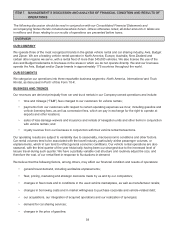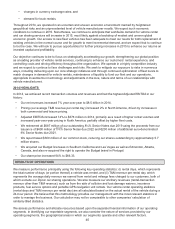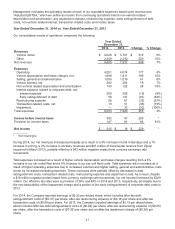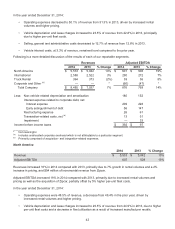Avis 2014 Annual Report Download - page 39
Download and view the complete annual report
Please find page 39 of the 2014 Avis annual report below. You can navigate through the pages in the report by either clicking on the pages listed below, or by using the keyword search tool below to find specific information within the annual report.
32
increase in our own cost of borrowing, our debt service obligations for our variable rate indebtedness would
increase even though the amount of borrowings remained the same, and our results of operations could be
adversely affected. As of December 31, 2014, our total outstanding debt of approximately $11.5 billion included
unhedged interest rate sensitive debt of approximately $1.9 billion. During our seasonal borrowing peak in 2014,
outstanding unhedged interest rate sensitive debt totaled approximately $4.0 billion.
Approximately $1.6 billion of our corporate indebtedness as of December 31, 2014, and virtually all of our $8.1
billion of debt under vehicle programs, matures within the next five years. If we are unable to refinance maturing
indebtedness at interest rates that are equivalent to or lower than the interest rates on our maturing debt, our
results of operations or our financial condition may be adversely affected.
RISKS RELATED TO OUR COMMON STOCK
We face risks related to the market price of our common stock.
We cannot predict the prices at which our common stock will trade. The market price of our common stock
experienced substantial volatility in the past and may fluctuate widely in the future, depending upon many factors,
some of which may be beyond our control, including:
• our quarterly or annual earnings, or those of other companies in our industry, including our key suppliers;
• financial estimates that we provide to the public, any changes in such estimates, or our failure to meet
such estimates;
• actual or anticipated fluctuations in our operating results;
• changes in accounting standards, policies, guidance, interpretations or principles;
• announcements by us or our competitors of acquisitions, dispositions, strategies, management or
shareholder changes, marketing affiliations, projections, fleet costs, pricing actions or other competitive
actions;
• changes in earnings estimates by securities analysts or our ability to meet those estimates;
• changes in investors’ and analysts’ perceptions of our industry, business or related industries;
• the operating and stock price performance of other comparable companies;
• overall market fluctuations;
• success or failure of competitive service offerings or technologies;
• tax or regulatory developments in the United States or foreign countries;
• litigation involving us;
• the timing and amount of share repurchases by us; and
• general economic conditions and conditions in the credit markets.
If any of the foregoing occurs, it could cause our stock price to fall and may expose us to litigation, including class
action lawsuits that, even if unsuccessful, could be costly to defend and a distraction to management.
Our shareholders’ percentage of ownership may be diluted in the future.
Our shareholders’ percentage of ownership may be diluted in the future due to equity issuances or equity awards
that we granted or will grant to our directors, officers and employees. In addition, we may undertake acquisitions
financed in part through public or private offerings of securities, or other arrangements. If we issue equity


